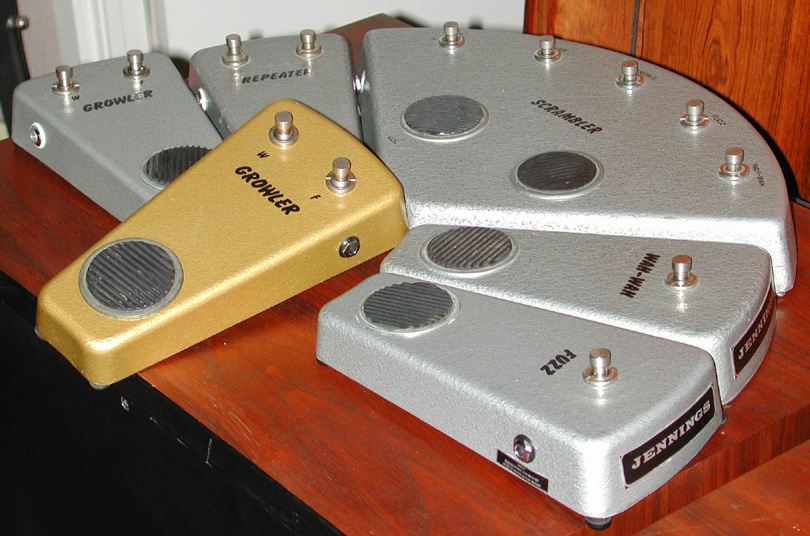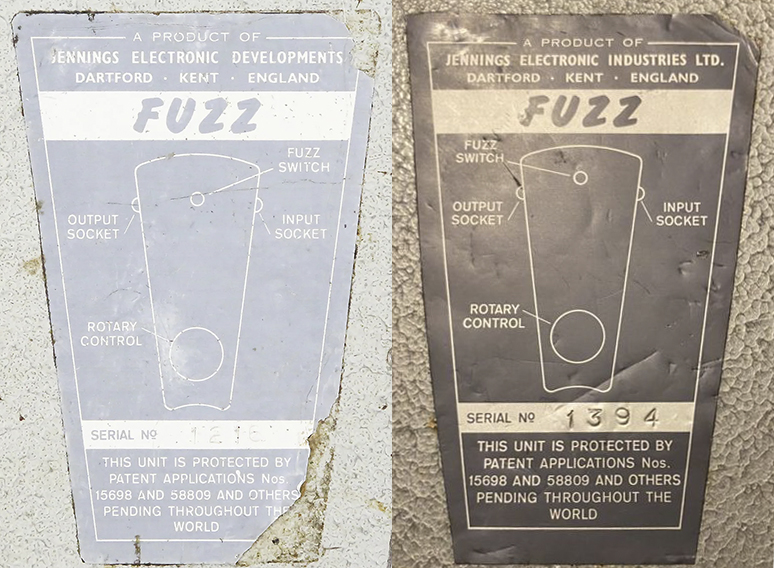- Overview
- Jennings ‘Rotary Foot Control’ series
- Jennings ‘Pedal Foot Control’ series
- Share your fuzz!
Overview
Jennings Electronic Developments (JED) was formed by Tom Jennings, following his dismissal from Jennings Musical Industries (Vox) in 1967. The vast majority of the historical information on this page about Jennings and the Jennings fuzz comes courtesy of Voxac100.org.uk, which is by far the most authoritative resource about the history of Vox & Jennings musical equipment.
During the period of 1968 until the early 1970s, Jennings produced a series of distinctive guitar effects pedals with rotary foot-operated potentiometers, and these foot controls worked differently for each of the different models. The pedals were painted in grey Hammerite (although a handful have resurfaced with a gold finish), and they featured a plaque on the bottom plate, denoting the model name & serial number.
A selection of late 1960s/early 1970s Jennings pedals is pictured above. Among the various different models from this series was a Jennings ‘Repeater’ pedal, which produced a tremolo effect, with a variable speed control; a Jennings wah-wah pedal, where the resonant peak was adjusted via the rotary pot, as opposed to the conventional treadle format; and various Jennings boost pedals with foot-operated rotary volume controls. (Photo credit: D. Johannson)
There were also four different models from the Jennings series that included fuzz effects. These were dubbed the Growler (combined fuzz & wah effects); the Cyclone (combined fuzz, wah, ‘siren’ and ‘hurricane’ effects); the Scrambler (combined fuzz, wah and various boost effects); and a simple standalone Fuzz unit.
Pedals in the Jennings line were built with circuits similar to earlier Dick Denney designs. Dick Denney, himself, continued working with Tom Jennings during this period. Given the scale of production of all of the Jennings equipment, it’s unlikely that the individual pedals were assembled by Denney.
The range of Jennings pedals was first reported being demonstrated at the British Musical Instrument Industries Trade Fair held in August 1968. A promotional advertisement for the show included pictures of early Wah, Growler & Scrambler pedals,1 and a report of the show in Beat Instrumental made reference to the Repeater, Hi-Lo Boost and “several others”,2 which reveals that the majority of the Jennings pedal designs had already been developed by 1968.
In 1969, Jennings Electronic Developments (JED) became known as Jennings Electronic Industries (JEI). Tom Jennings placed regular advertisements for Jennings equipment in Beat Instrumental, and the advertisements placed in 1969 suggest that the name change could have taken place between July and September of that year. The more precise date is unknown.
Following the name change, the branding on the bottom plates of Jennings pedals was adjusted accordingly. Pictured above is an example of the bottom plate from an earlier ‘JED’ fuzz, compared with a later ‘JEI’ fuzz. (Photo credit: C. Nelson & Y. Asai)
Jennings ‘Rotary Foot Control’ series
Jennings Fuzz (F.1)

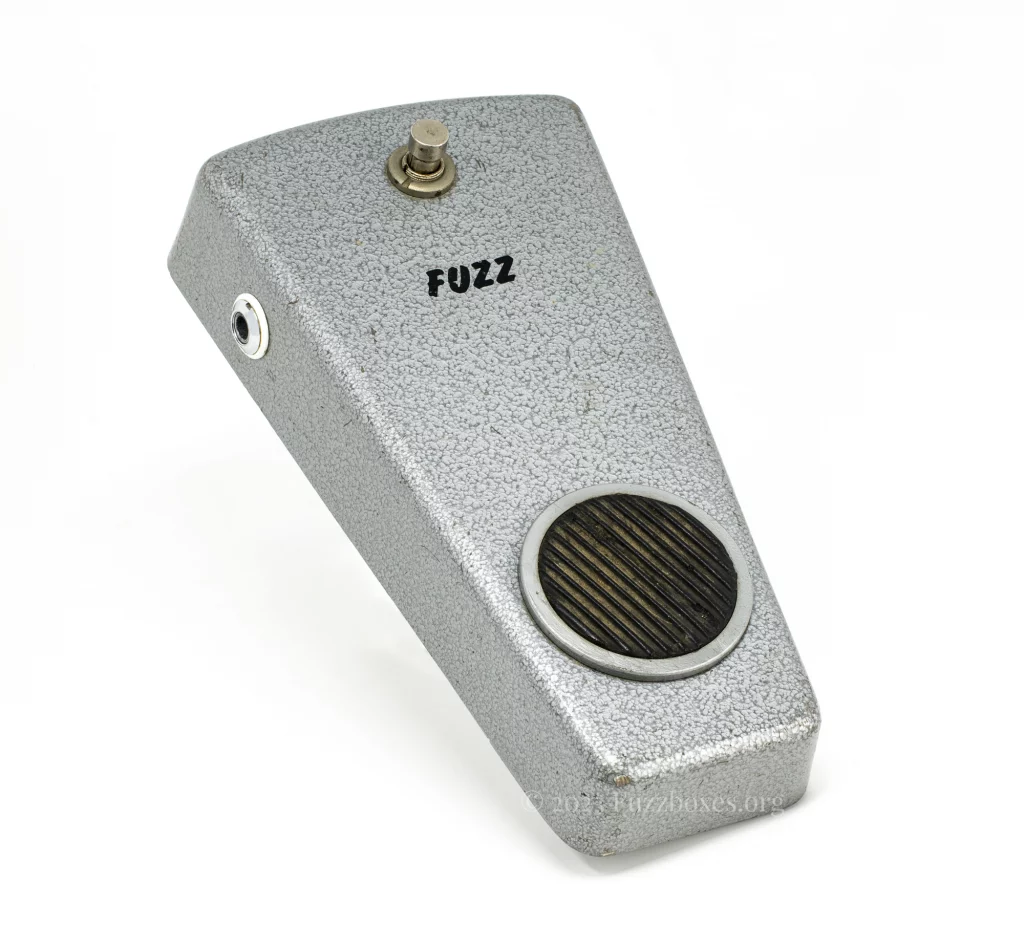

The basic Jennings Fuzz unit was built following a textbook shunt-series feedback amplifier circuit, similar to the circuits found in other early British fuzz boxes such as Sola Sound’s two-transistor Tone Bender ‘MK1.5’, Arbiter’s Fuzz Face, and certain versions of the Vox Distortion Booster.
These fuzz boxes were incredibly simple in their operation, featuring just a foot switch to toggle between the effect and the bypassed sound, and the patented rotary control determined the loudness of the fuzz sound.
Jennings Growler (G.1)
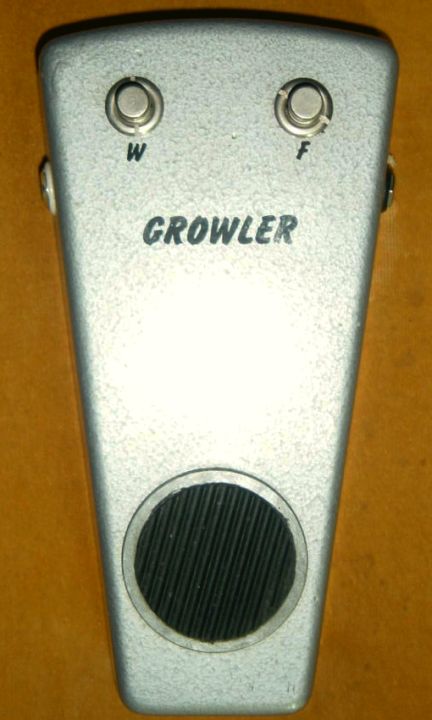
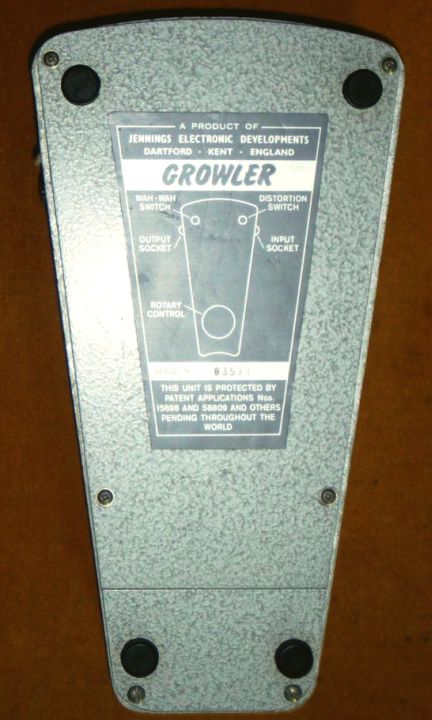
Jennings’ Growler was a more sophisticated version of the standalone fuzz box. It included a wah-wah effect (controlled by the rotary pad), and foot switches to toggle the individual fuzz & wah sounds, or to combine the two effects together. (Photo credit unknown)
Jennings Cyclone (S.W.F.1)
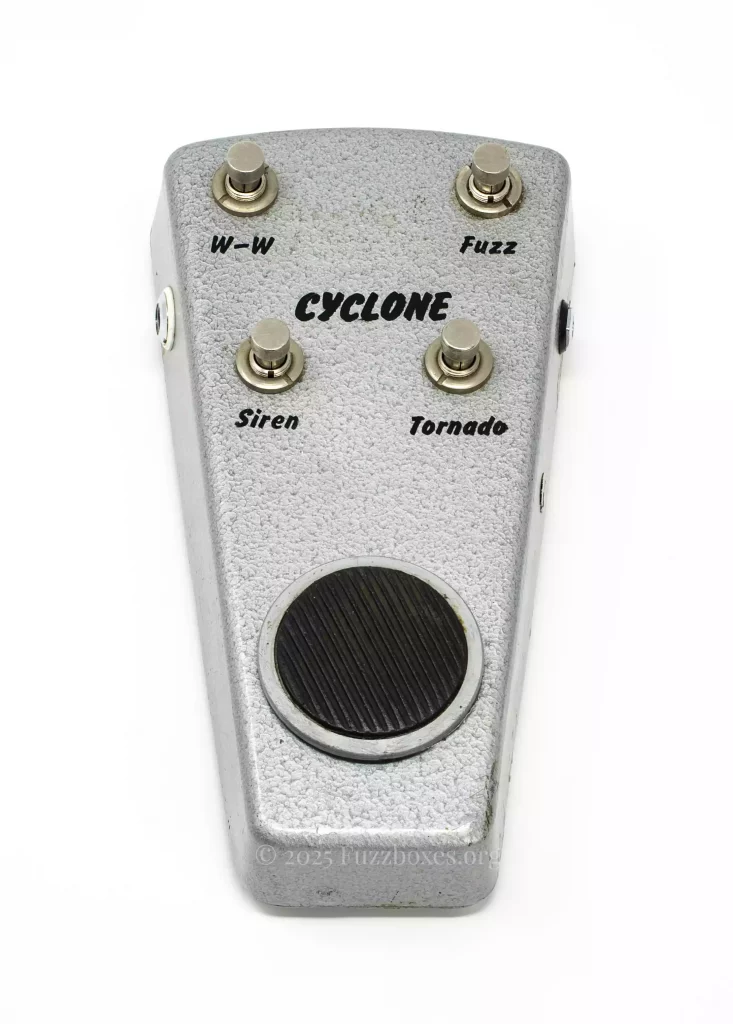
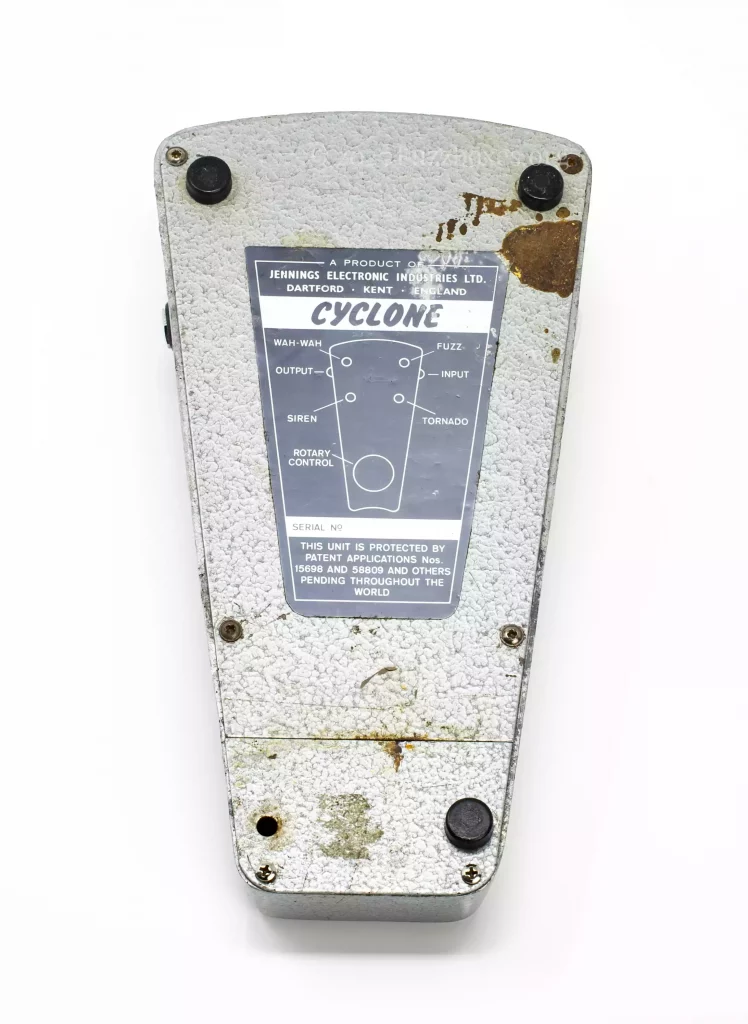
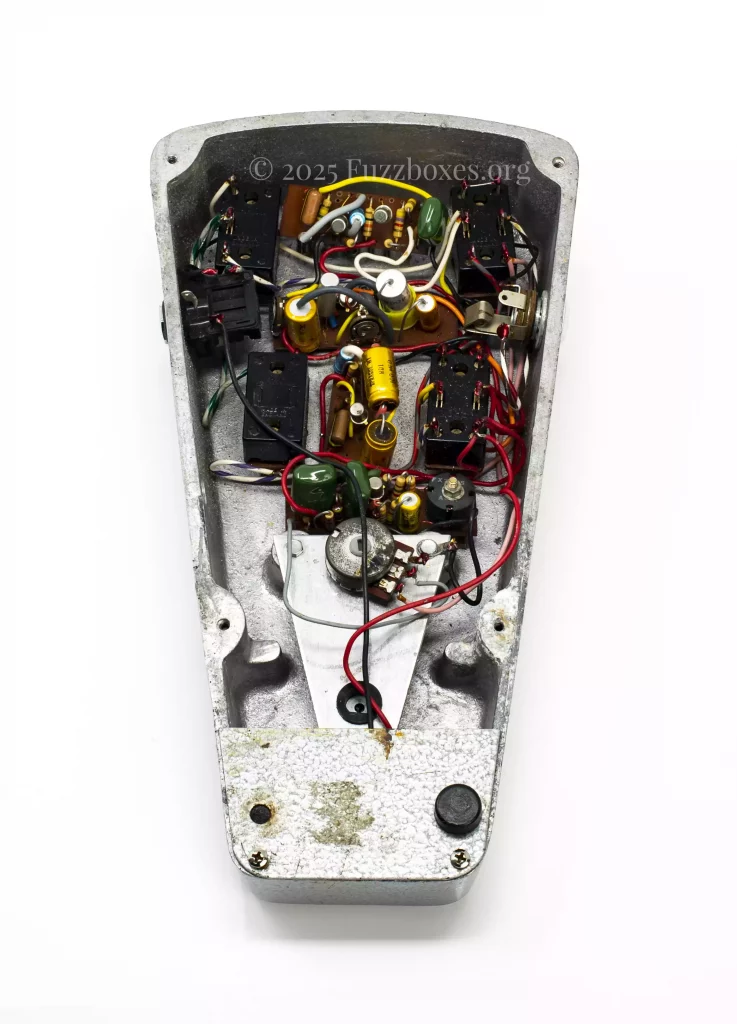
The Jennings Cyclone further expanded upon their basic fuzz box. In addition to a wah-wah option, similar to the Growler, the Cyclone added new ‘siren’ and ‘hurricane’ noise effects, which could be combined with the fuzz & wah sounds. The particular Cyclone here has an interesting hole in the side that was plugged and painted over at the factory. This suggests that it may have originally been machined for the even more obscure Jennings ‘Bushwhacker’ model that came with an additional rotary control. None of the other Cyclones sighted thus far have this extra hole, however.
Jennings Scrambler (S.C.1)
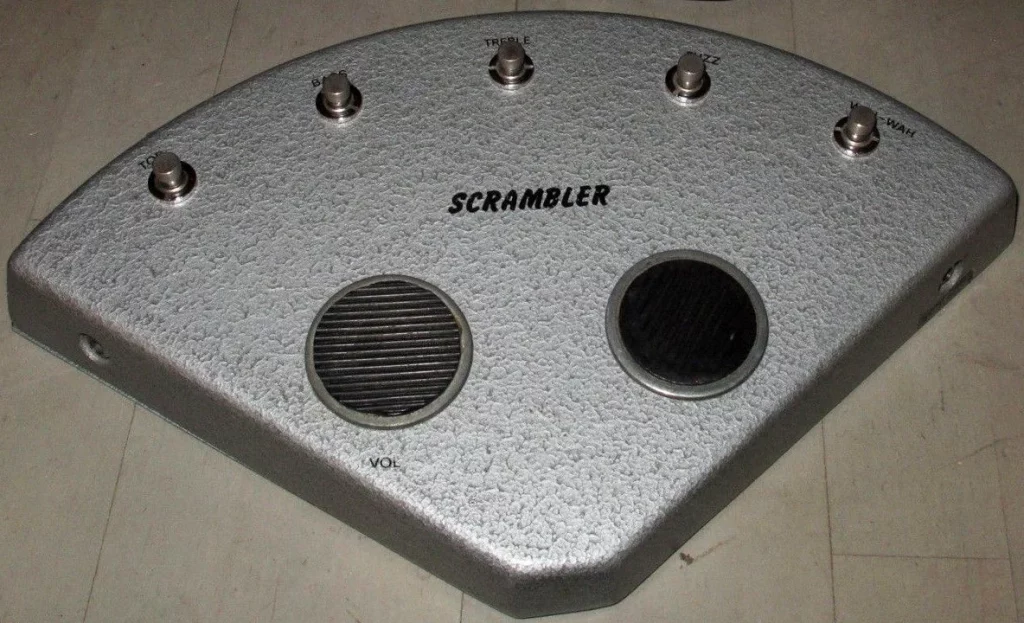
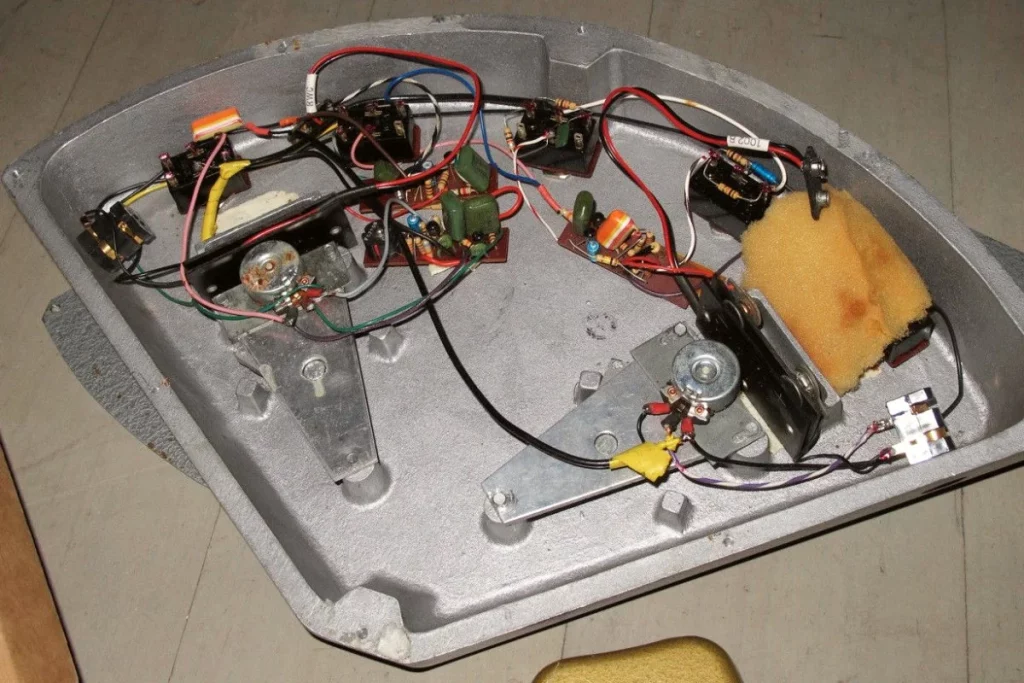
This bizarre Jennings pedal combined fuzz, wah, and a series of boost options into a single giant multi-effects pedal. The Practical Electronics magazine took interest in this highly esoteric model, and referred to it in the November 1969 & November 1972 issues. (Photo credit: D. Johannson/API)
Rotosound pedals
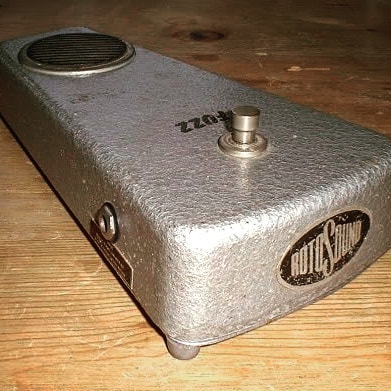

For a brief period, the line of Jennings pedals was being distributed by the Rotosound strings company. It was reported that the business partnership between Tom Jennings and James How began in November 19683
These Rotosound-branded pedals are considerably rarer than the Jennings versions. Nevertheless, the Fuzz and Growler pedals pictured above are otherwise identical to the more familiar Jennings F.1 and G.1, apart from bearing a different brand name. (Photo credit: S. Castledine & H. Seven)
The Jennings Wah-wah pedals were reportedly also branded for Rotosound in the late 1960s,4 but at the time of writing, there are none known to still survive.
Framus pedals

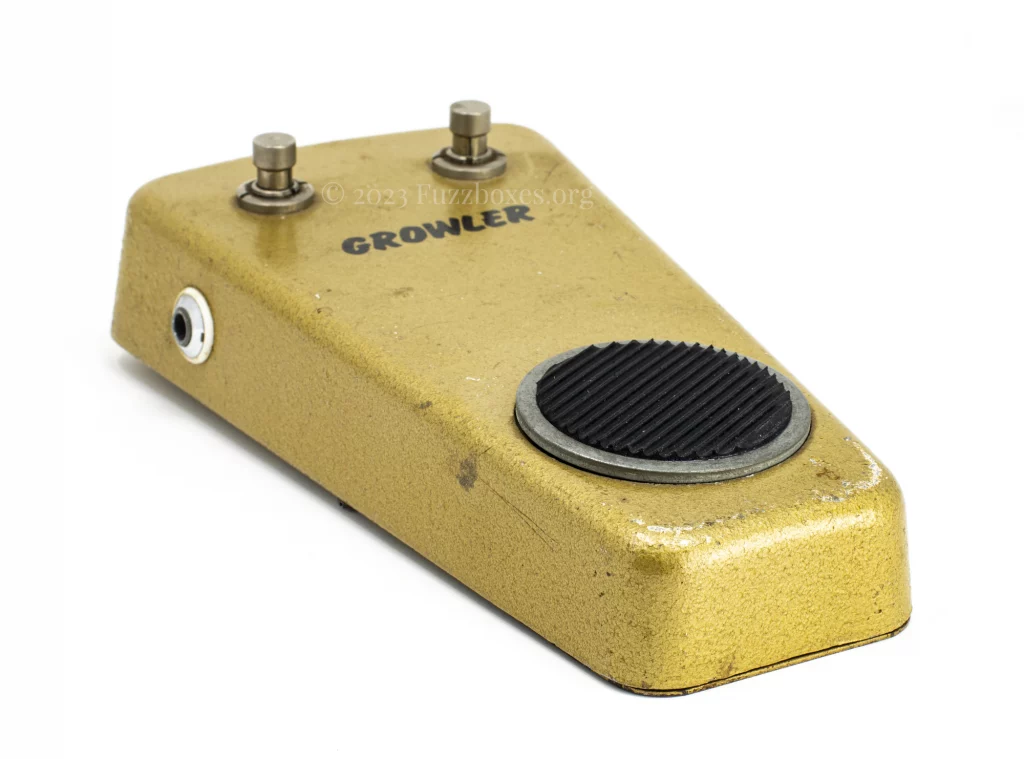
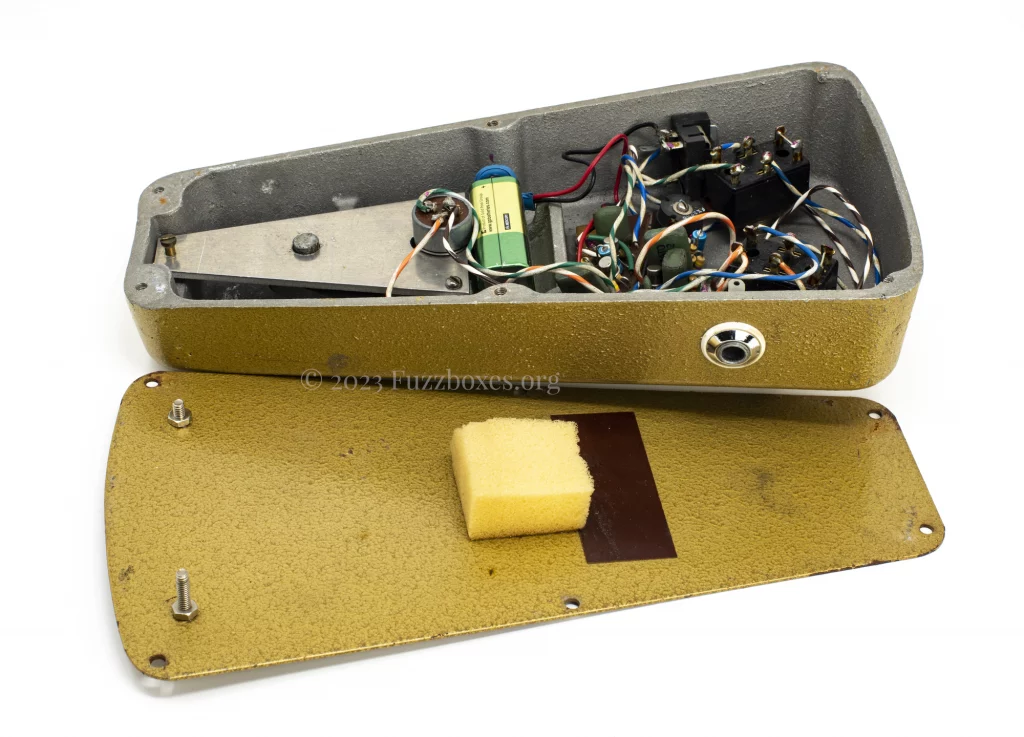
Jennings pedals were also briefly sold by Framus (a German instrument manufacturer), as exemplified by a number of gold painted Framus Growler (fuzz & wah) pedals that have resurfaced. It is unknown at this point whether any of the other pedals from the Jennings rotary series were rebranded for Framus. Unsurprisingly, the Framus Growlers overwhelmingly show up in Germany.
Jennings ‘Pedal Foot Control’ series
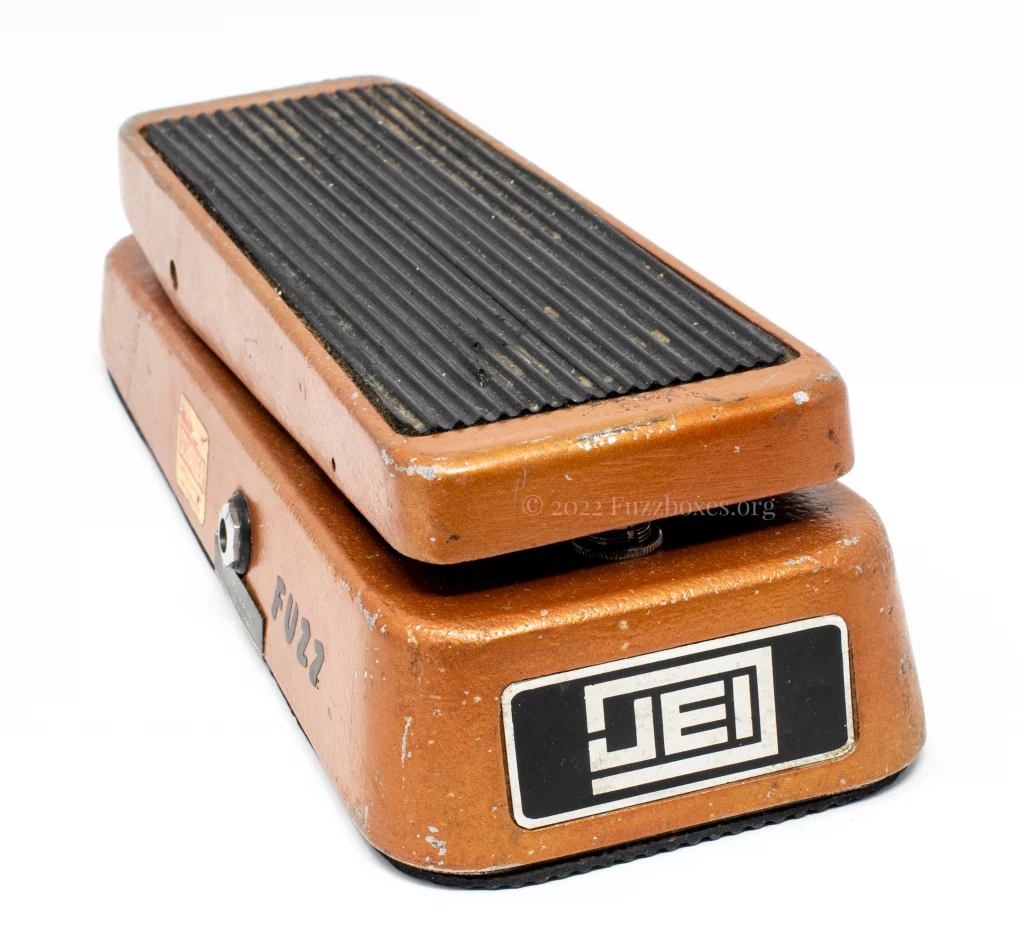
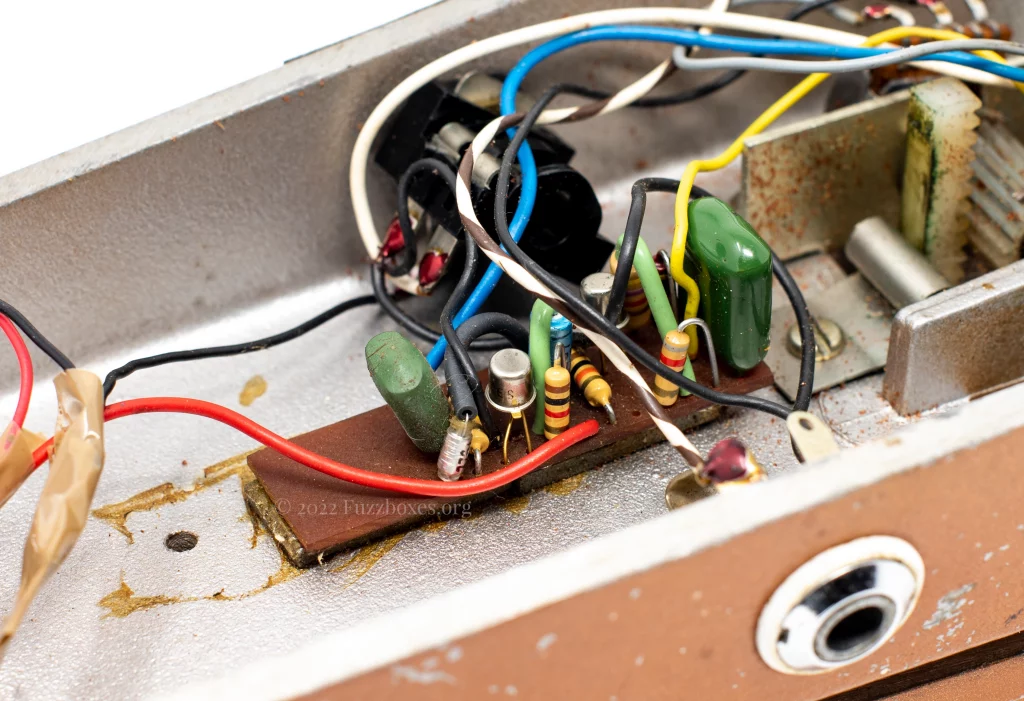

A suggested retail price list, dated December 1972, confirms that the Jennings ‘rotary foot control’ pedals were still in production into the 1970s, but the price list also makes reference to a newer series of ‘pedal foot control’ pedals. According to the December price list, the Jennings fuzz and Jennings wah-wah models were offered in both ‘rotary’ and in ‘pedal’ options, at the same price.
The Jennings Electronic Industries ‘pedal foot control’ units were built with the conventional ‘treadle’ enclosure, as had previously been used by many manufacturers around the world (including JMI) for volume control and for wah-wah effects. The JEI ‘pedal foot control’ series comprised a volume pedal (VC.1), a wah-wah pedal (WP.1), and also a fuzz pedal (FP.1).
The Jennings effects pedals with the rotary foot-operated potentiometer had been in production since 1968, and were advertised regularly, but the ‘rotary’ series appears to have been discontinued by the time that the JEI catalogue & price list of 1973 was published. The newer JEI ‘pedal control’ models were still pictured and listed, which suggests that the Jennings pedals with the conventional treadles eventually replaced the ‘rotary’ series.
The JEI treadle-style pedals were, however, probably only built for an extremely limited period. Of the three different ‘pedal foot control’ models, only a single exemplar of one model of the series is known to survive. The JEI ‘pedal control’ Fuzz, pictured above, features identical circuitry to the ‘rotary control’ Fuzz, and functions in exactly the same way, other than that the volume of the fuzz is controlled by the treadle, rather than by a rotary potentiometer.
Share your fuzz!
I welcome any comments, feedback, queries & corrections in relation to the Fuzzboxes.org project. Please get in touch via this contact form (or on the ‘contact‘ page).
Much of our understanding of the development of 1960s fuzz boxes comes from analysis of surviving pedals themselves, and so photos of pedals belonging to readers are particularly useful in furthering this research.
If you would like to contribute pictures of 1960s-era guitar effects to Fuzzboxes.org, then feel free to send in any pictures via the uploader below. Photos are greatly appreciated, and any submissions are not published on this website without advance agreement with the contributor.
Thanks to the Voxac100.org.uk resource.
